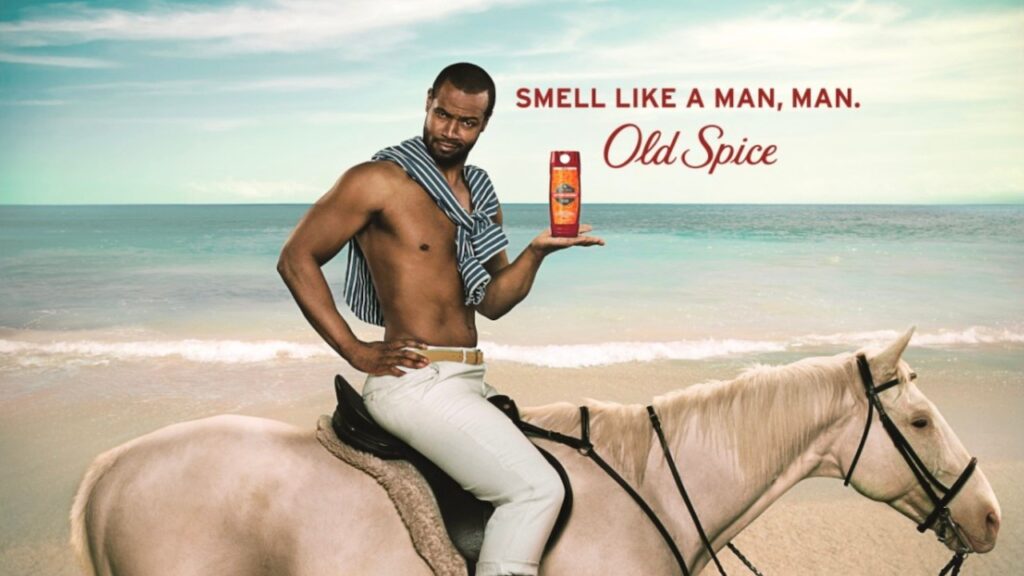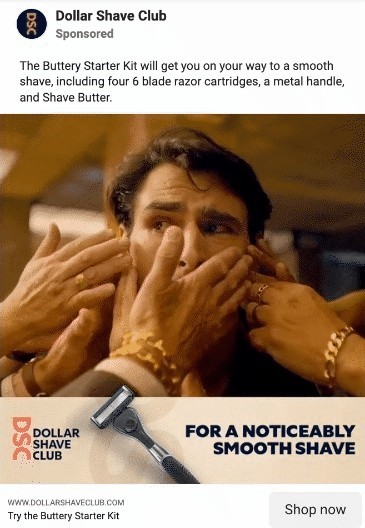In today’s fast-paced and hyper-competitive digital landscape, where attention spans are shorter than ever, capturing your audience’s attention and making your brand stand out can feel like an uphill battle. With an overwhelming amount of content competing for their limited time and attention, how can you break through the noise and leave a lasting impression? The answer lies in incorporating humour into your content marketing strategies. By infusing a touch of laughter and wit, you can create a memorable and engaging experience that sets your brand apart from the crowd. In this article, we will dive deep into the power of humour in content marketing, exploring its benefits, sharing real-life case studies, and providing practical tips for effectively integrating humour into your marketing efforts.

The Importance of Humor in Content Marketing
Humour is a universal language that transcends cultural barriers, evokes positive emotions, and creates a connection between people. When used strategically in content marketing, humour can have a profound impact on your audience. Here are some key reasons why humour is essential:
Grabbing Attention: In a digital landscape filled with endless distractions, humour can serve as a powerful attention-grabbing tool. A well-placed joke or a clever pun can instantly capture the interest of your audience and compel them to delve deeper into your content. It acts as a hook that pulls them in and encourages them to explore what your brand has to offer.
Creating Memorable Experiences: Humor has the ability to make your content memorable. When your audience associates positive emotions like laughter with your brand, they are more likely to remember and recall your message. Humorous content stands out in a sea of information overload, leaving a lasting impression on your audience’s minds. They may even share your content with others, spreading the word about your brand organically.

Building Emotional Connections: By incorporating humour into your content, you humanise your brand and create an emotional connection with your audience. Humour helps to break down barriers and establish a relatable and friendly image, fostering trust and loyalty. When your audience finds your content amusing, they feel a sense of affinity towards your brand and are more likely to develop a deeper connection.

Enhancing Engagement: Humorous content is inherently more engaging. It encourages interaction, sparks conversations, and increases social sharing. When your audience finds your content entertaining, they are more likely to like, comment, and share it with their network, expanding your reach organically. Humour creates a sense of community and encourages your audience to actively participate in the conversation around your brand.
Humanising Your Brand: Humour allows you to showcase the personality and values of your brand in a more approachable and relatable way. It adds a human touch to your content, making it more authentic and appealing to your audience. By infusing humour into your brand messaging, you create a distinct voice that sets you apart from competitors and resonates with your target audience.
Breaking Down Complex Concepts: Sometimes, your content may involve complex or technical information that can be overwhelming for your audience. Humour can be a valuable tool in breaking down these concepts and making them more accessible. By using analogies, visual humour, or relatable examples, you can simplify complex ideas and ensure that your audience understands and retains the information.
Driving Brand Awareness and Differentiation: In a crowded marketplace, humour can help your brand stand out from the competition. It adds a unique flavour to your content that sets you apart and makes you memorable. When your audience associates your brand with humour, they are more likely to recall and choose your brand over others. It helps to create a distinct brand identity that leaves a lasting impression.
Incorporating humour into your content marketing strategies is a powerful way to engage your audience, foster emotional connections, and create memorable experiences. It adds personality and authenticity to your brand, while also driving brand awareness and differentiation. By understanding your audience’s preferences, aligning humour with your brand’s personality, and delivering content that is both entertaining and valuable, you can harness the power of humour to boost your content marketing efforts and achieve greater success. So, don’t be afraid to infuse your content with laughter and watch as it captivates your audience and brings your brand to life.
The Science Behind Humor
The Science of Humor in Content Marketing
- Emotional Connection and Positive Associations
When we laugh, our brains release endorphins, which promote feelings of pleasure and happiness. This creates a positive association with the source of laughter, including humorous content from brands. By incorporating humour into your content marketing, you can foster a deeper emotional connection with your audience and leave a lasting positive impression.
- Enhanced Information Retention
Humour has been found to enhance information retention. When we laugh, our brains become more receptive to learning and remembering information. By infusing your content with humour, you increase the likelihood that your audience will not only engage with your content but also remember and recall your message.
- Simplifying Complex Concepts
Humor plays a crucial role in breaking down complex concepts and making them more accessible to your audience. By using humour to simplify and clarify information, you can help your audience better understand and grasp the key points you’re trying to convey. Whether it’s a witty analogy, a humorous metaphor, or a funny example, humour can make your content more relatable and memorable.
Understanding the science behind humour allows us to appreciate its potential impact on content marketing. By tapping into the positive emotions and cognitive benefits that humour provides, you can create a content experience that not only entertains but also educates and engages your audience on a deeper level.
Case Study 1: The Side-Splitting Success of Old Spice

When it comes to incorporating humour into content marketing, one brand that stands out as a prime example is Old Spice. With their “The Man Your Man Could Smell Like” campaign, Old Spice took the internet by storm, becoming a viral sensation and leaving a lasting impression on audiences worldwide. By embracing absurdity and cleverly intertwining humour with product benefits, Old Spice created a series of memorable and highly shareable videos that captivated their target audience.
One of Old Spice’s most notable ads featured a charismatic spokesman delivering a monologue while seamlessly transitioning between various locations and scenarios. The humour in the ad was unexpected, yet relatable, capturing the attention of viewers and keeping them engaged throughout. The commercial’s unique blend of humour, catchy jingles, and absurdity helped Old Spice redefine their brand image, appealing to a wider audience and rejuvenating their sales.
What made Old Spice’s campaign so successful was their ability to find the perfect balance between humour and showcasing the product’s benefits. While the ads were entertaining and funny, they never lost sight of their primary objective: to promote Old Spice as a high-quality grooming product. By incorporating humour that directly tied into the product’s features and value proposition, Old Spice was able to communicate their message effectively while keeping their audience entertained.

Finding Your Brand’s Humour Style:
Now that we’ve seen the impact humour can have in content marketing through the example of Old Spice, let’s explore how you can find your brand’s unique humour style. Here are some factors to consider:
Audience Analysis: Understanding your target audience is key to determining the type of humour that will resonate with them. Take the time to research and analyse your audience’s preferences, values, and sense of humour. Are they more likely to appreciate witty wordplay, subtle sarcasm, or slapstick comedy? Tailoring your humour style to align with their tastes and interests will increase the chances of connecting with them on a deeper level.
Brand Voice: Your brand already has its own tone and voice. Evaluate your brand’s existing communication style and identify its unique personality traits. Is your brand playful, irreverent, or clever? Your humour style should align seamlessly with your brand’s voice to ensure consistency and authenticity. This will make your humour feel natural and genuine, enhancing the overall brand experience for your audience.
Industry Fit: Consider the industry in which your brand operates. Different industries have different levels of openness to humour. While some sectors may be more receptive to playful and humorous content, others may require a more subtle and nuanced approach. Evaluate the appropriateness of humour within your industry and adapt your humour style accordingly. It’s essential to strike a balance between entertainment and maintaining a professional image that aligns with industry expectations.
Experiment and Refine: Incorporating humour into your content marketing is an ongoing process of experimentation and refinement. Test different types of humour and observe how your audience responds. Analyse the metrics and feedback to gain insights into what works and what doesn’t. Iterate and refine your approach based on the data, and don’t be afraid to take risks and try new ideas.
Remember, finding your brand’s humour style is a journey that requires a deep understanding of your audience, your brand’s voice, and the industry landscape. It’s about creating a unique and memorable experience that resonates with your target market. By infusing humour into your content marketing strategies, you can differentiate your brand, establish emotional connections with your audience, and ultimately drive business success.
Case Study 2: Wendy’s Savvy Social Media Banter

Another remarkable example of incorporating humour into content marketing can be seen in Wendy’s, the popular fast-food chain. Wendy’s took the social media world by storm with their witty comebacks and humorous exchanges, setting themselves apart from their competitors and building a loyal following.
Wendy’s became known for their bold and cheeky tone on platforms like Twitter, where they engaged with their audience in a refreshing and humorous way. Their quick wit and playful banter became a signature element of their social media presence, earning them a reputation for their savvy and entertaining interactions.
One instance that showcased Wendy’s humorous social media prowess was a Twitter exchange with a user who asked, “Got any tips for when I inevitably have to fight somebody for your nuggets?” Wendy’s responded with a cheeky comeback, saying, “Fight for your right to delicious nuggets, we guess?” This witty and unexpected reply not only delighted their audience but also caught the attention of many others, generating buzz and further solidifying Wendy’s reputation as a brand with a great sense of humour.

Crafting Humorous Content:
Now that we’ve explored some inspiring case studies, let’s dive into practical tips for crafting humorous content that resonates with your audience:
Use Wordplay and Puns: Clever wordplay and puns can add a sprinkle of wit to your content. Experiment with playful language and creative expressions to create a lighthearted and memorable experience. For example, a pet store might playfully advertise their “pawsome deals” or a bakery could highlight their “roll-licking good pastries.”
Visual Humour: Incorporate visual elements such as memes, GIFs, or cartoons to complement your written content. Visual humour can instantly grab attention and generate social shares. Consider creating humorous illustrations, graphics, or videos that align with your brand’s messaging. For example, an electronics company might create a funny GIF illustrating the frustration of tangled wires or a tech-related meme that highlights a relatable technology struggle.
Storytelling with a Twist: Inject humour into your storytelling to captivate your audience. Use unexpected plot twists, amusing anecdotes, or relatable situations to evoke laughter and make your content more relatable. For instance, a fitness brand could share a blog post titled “Gym Fails: Laughing Your Way to Fitness,” where they recount humorous stories of workout mishaps or embarrassing gym moments.
Embrace Pop Culture References: Tap into popular culture to add a touch of humour to your content. Incorporate references to movies, TV shows, memes, or trending topics that your audience can relate to. This not only shows that you’re current and in tune with popular trends but also creates an instant connection and recognition with your audience.
User-Generated Content Contests: Encourage your audience to participate in creating humorous content related to your brand. Run contests where users can submit funny videos, memes, or photos, showcasing their creativity and humour. Not only does this foster engagement and interaction with your audience, but it also generates a stream of user-generated content that can be shared across your social platforms.
Remember, humour is subjective, so it’s crucial to understand your audience’s preferences and tailor your content accordingly. Monitor the engagement and feedback you receive to gain insights into what resonates with your audience and what doesn’t. As with any marketing strategy, it’s essential to iterate, experiment, and refine your approach over time.
By infusing your content with humour, you can create a more enjoyable and memorable experience for your audience. Humour has the power to captivate attention, foster emotional connections, and differentiate your brand from the competition. So, go ahead, embrace the lighter side of marketing, and let humour work
Case Study 3: Dollar Shave Club’s Humorous Brand Persona

Another prime example of successfully incorporating humour into content marketing is Dollar Shave Club. This disruptive company revolutionised the shaving industry with their humorous and irreverent approach to marketing. Their viral launch video, featuring the company’s founder delivering a witty monologue, quickly grabbed the attention of viewers and set the tone for their brand persona. By infusing humour into every aspect of their marketing, Dollar Shave Club created a strong emotional connection with their audience and stood out from traditional shaving brands.
Dollar Shave Club’s ability to inject humour into their product descriptions, social media posts, and advertisements allowed them to differentiate themselves and engage with their audience on a deeper level. One of their notable ads humorously addressed the frustration of overpriced razors. In the ad, a Dollar Shave Club member casually strolls through a factory filled with outlandish scenarios, including a bear on a unicycle. The humorous tone effectively conveyed their value proposition while entertaining viewers. The ad quickly went viral, garnering millions of views and driving a significant increase in subscriptions.

Promoting Shareability: Humorous content has a natural tendency to be highly shareable, expanding its reach and impact. Here are some techniques to encourage sharing.
Create Memorable Taglines: Develop catchy and humorous taglines that resonate with your audience. These concise statements can become memorable catch phrases associated with your brand, increasing the likelihood of social sharing. For example, Snickers’ iconic tagline “You’re not you when you’re hungry” combines humour and relatability, striking a chord with their target audience.
Encourage User-Generated Content: Invite your audience to participate by creating their own humorous content related to your brand. User-generated content not only sparks engagement but also expands your brand’s reach through social sharing.
Consider running contests or challenges that encourage users to submit funny videos or photos showcasing your product or service. This not only generates buzz but also allows your audience to become ambassadors for your brand.

Leverage Social Media Platforms: Social media platforms offer the perfect playground for humour. Experiment with funny captions, interactive quizzes, memes, and challenges to engage your audience and encourage them to share your content.
For instance, a fashion brand could create a humorous meme series featuring their latest collection, inviting followers to tag their friends who can relate to the fashion struggles depicted. This not only generates laughs but also increases the chances of content sharing.
Measuring Success and Adaptation: To gauge the effectiveness of your humour-infused content marketing strategies, it’s essential to measure key performance indicators (KPIs). These may include metrics such as engagement rates, social shares, website traffic, and conversion rates. Analysing the data will provide insights into what works best for your audience and help refine your future content.
It’s important to note that humour is not a one-size-fits-all approach. It requires continuous adaptation and experimentation to stay relevant and resonate with your target audience. Stay attuned to their feedback, monitor trends, and evolve your humour style accordingly. Be open to learning from your successes and failures, and don’t be afraid to push the boundaries of creativity to create content that truly captivates and delights your audience.
Incorporating humour into your content marketing strategies can be a game-changer for your brand. It not only helps you stand out in a crowded digital landscape but also builds a deeper connection with your audience. By understanding the science behind humour, learning from successful case studies, and implementing practical tips, you can unlock the power of laughter and create content that leaves a lasting impression. So, embrace the lighter side of marketing and get ready to take your brand to new heights with humour.
Conclusion
In conclusion, incorporating humour into your content marketing strategies can yield significant benefits for your brand. By understanding your audience’s preferences and aligning humour with your brand’s personality, you can humanise your brand, foster positive associations, and make it more relatable and approachable.
Humour grabs attention and creates an emotional connection with your audience, increasing the likelihood of them sharing your content with others. This not only enhances brand awareness but also generates buzz and word-of-mouth marketing.
To effectively incorporate humour, it is essential to stay relevant, timely, and sensitive. Embrace your brand’s unique humour style and utilise creative techniques such as wordplay, visual humour, and storytelling with a twist. Encourage sharing through memorable taglines, user-generated content, and social media engagement.
Monitoring the success of your humour-infused content is crucial. Analyse key performance indicators, gather audience feedback, and adapt your approach based on changing trends. Continuous experimentation and refinement are necessary to keep your humour effective and resonate with your audience.
In the words of Walt Disney, “Laughter is timeless, imagination has no age, and dreams are forever.” Embrace the power of humour in your content marketing strategies, and may it bring joy, engagement, and success to your brand. Let humour be the thread that weaves through your content, creating a delightful and memorable experience for your audience. With a well-executed humour strategy, your brand can shine bright in the world of content marketing.

